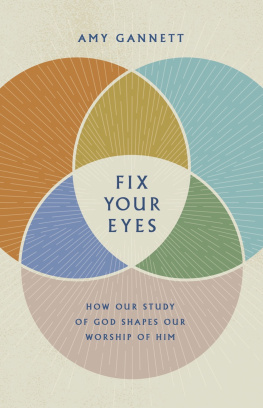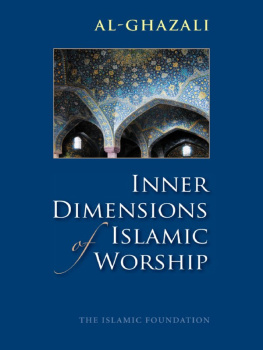WORSHIP IN ISLAM
The Essential Mawdd Series
First Principles of Islamic Economics Four Key Concepts of the Qurn
Islamic Civilization: Its Foundational Beliefs and Principles Let Us Be Muslims
The Islamic Movement: Dynamics of Values, Power and Change The Islamic Way of Life
Towards Understanding Islam
Towards Understanding the Qurn, Vols 110, 14
Towards Understanding the Qurn (single abridged volume)
Worship in Islam
Forthcoming
Towards Understanding the Qurn, Vols 1113
WORSHIP IN ISLAM
An In-Depth Study of Ibdah, alh and awm
Sayyid Abul Al Mawdd
Translated and edited by
Ahmad Imam Shafaq Hashemi
THE ISLAMIC FOUNDATION
Worship in Islam: An In-Depth Study of Ibdah, alh and awm
Published by
THE ISLAMIC FOUNDATION,
Markfield Conference Centre,
Ratby Lane, Markfield, Leicestershire
LE67 9SY, United Kingdom
E-mail:
Website: www.islamic-foundation.com
Quran House, PO Box 30611, Nairobi, Kenya
PMB 3193, Kano, Nigeria
Distributed by
KUBE PUBLISHING LTD.
Tel: +44(0)1530 249230, Fax: +44(0)1530 249656
E-mail:
Copyright The Islamic Foundation 2014 CE/1435 AH
All rights reserved. No part of this publication may be reproduced, stored in a retrieval system, or transmitted in any form or by any means, electronic, mechanical, photocopying, recording or otherwise, without the prior permission of the copyright owner.
Cataloguing-in-Publication Data is available from the British Library
ISBN: 978-0-86037-605-7 casebound
ISBN: 978-0-86037-571-5 paperback
ISBN: 978-0-86037-640-8
Typeset by: N.A.Qaddoura
Cover design by: Nasir Cadir

Contents
PART ONE
SPIRITUALITY AND THE ISLAMIC WAY OF LIFE
PART TWO
IBDAH: ITS SIGNIFICANCE IN THE
ISLAMIC SOCIAL ORDER
Arabic Consonants
Initial, unexpressed medial and final: 

With a shaddah, both medial and final consonants are doubled.
Vowels, diphthongs, etc.
Anis Ahmad
In one form or another, worship is a common phenomenon in most of the worlds known religions, cultures and civilizations. Not only did so-called primitive man, perhaps fascinated by the enormity of nature, bow down and prostrate in front of natural objects and offered flowers and food to befriend nature, but, even in the developed religions and also in secular societies, certain acts of devotion and ritual have become an integral part of life and society. Religiously-conscious communities in the east and the west, even in the so-called less developed cultures, carry highly articulated systems of worship. Often worship is performed through bodily gestures and postures, mental and bodily discipline, animal sacrifice and dedicated pilgrimages to holy places. Those who call themselves liberated and irreligious have their own secular rituals, acts of devotion and offerings that are earnestly and meticulously observed. Examples of such rituals are observed on Valentines Day, the Olympic torch procession, New Year celebrations, saluting and standing respectfully when the national anthem is played or placing wreaths on the graves of national heroes on designated memorial days.
Is worship the projection of an overactive mind? Is it a psychological need or a cultural hang-up? Do we need worship in an age of science and technology? Does worship help in seeking mental peace? These and many other similar questions persuade us to look critically into the meaning and relevance of worship (ibdah) in Islam and other religio-cultural traditions.
Followers of the world religions observe elaborate rituals, performed to celebrate the human cycle of birth, maturity and death, which are known as rites of passage. There are also non-cyclic crisis rituals such as fertility rituals. Modern anthropological studies of religion often associate these rituals with
Rituals, ceremonies and festivals are generally manifestations of the concept of worship in a religion. To the contrary, the Arabic term ibdah, usually translated as worship, servitude or remembrance in order to serve the ultimate Creator, refers to a wider and more comprehensive phenomenon. It is essentially a spiritual encounter of a believer with his or her Creator, the Eternal, All-Knowing, All-Powerful and All-Merciful Allah, Most Glorified and Exalted. Whilst it is an intimate personal experience, it can assume an overt and manifest articulation, in conscious yet visible or not-so-visible forms. It is an acknowledgement as well as a manifestation of an attitude of thankful attachment with and commitment towards the Transcendent, Allah Most Glorified and Exalted.
Worship, in this sense, is a matter of dialogue between the finite and the Infinite; it is a subjectObject relationship. It is a unique way of relating with the Ultimate Reality and Truth through adoration, glorification, love, veneration, praise and submission. It is an earnest effort of bewildered followers to open up their hearts to the All-Hearing, All-Seeing and All-Caring. It is an on-going spiritual interaction between the seeker and the Sought.
In many religions this dialogue may take place at a sacrificial level, wherein offerings are made as an individual or collective partaking in religious experience. It may take place at a mystical level, where certain chanting and disciplining of the heart, mind, soul and self may culminate in a spiritual communion with the Ultimate, resulting in enlightenment, elation of spirit and experience of the ineffable and an incommunicable ecstasy. Individual prayers, meditations, prostrations and kneeling down only express humility and obedience to the One Most High.
In the ancient Sumerian religion prostration and kneeling do not appear in their orthodox service, but there is evidence of their use among the Babylonians and the Assyrians as acts of worship. Worship in the form of puja does not have a place in the Buddhist path or marga. However, worship as dna or giving or gifting is a known practice in Buddhism. Chinese religions have a special place for ancestral veneration and filial piety with elaborate rituals. Religion, according to Jesus (peace be upon him), consists in filial trust and love towards In Judaism, the rabbi has no organic connection with the priesthood, while worship in Hinduism does have an organic connection with it. Nearly all functions are performed by priests belonging to the Brahmanical caste. Worship in Hinduism includes the reverence of nature, animals, plants, mythical gods and goddesses and holy men, places and symbols.


















